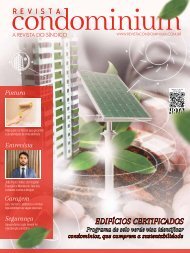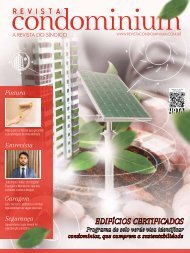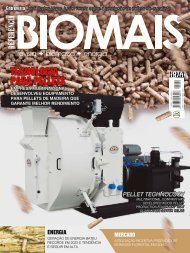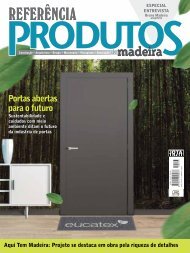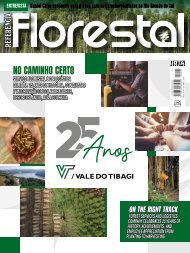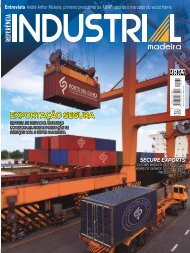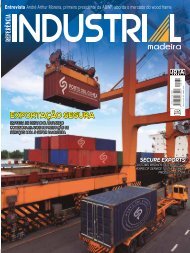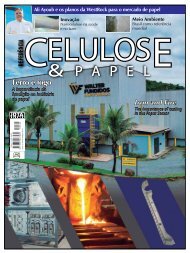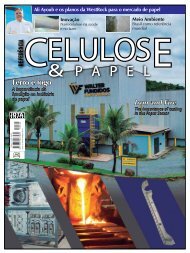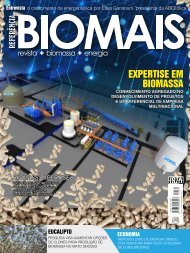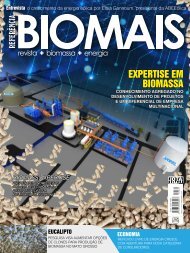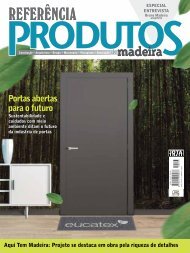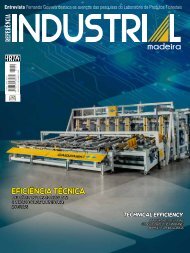Create successful ePaper yourself
Turn your PDF publications into a flip-book with our unique Google optimized e-Paper software.
R E S E R V A S N A T U R A I S<br />
Além disso, trabalhar com<br />
outras reservas nos ajuda a<br />
olhar a problemática com<br />
outros olhos, o que agrega<br />
bastante para a tomada de<br />
decisões mais de acordo<br />
com a realidade local<br />
do Parque Nacional do Pau Brasil. Portanto, conectar<br />
o parque como fragmento principal a outros<br />
menores que estão nas suas adjacências é extremamente<br />
importante para o trabalho de preservação<br />
de todas as reservas e fragmentos da região, para<br />
que as RPPNs que possuem programas de conservação<br />
bem estruturados, já têm trabalhado há muito<br />
em um contexto territorial. “Assim, integrar os fragmentos<br />
da região com corredores como o Corredor<br />
Estação Veracel x PARNA Pau Brasil e o corredor Rio<br />
do Brasil REVIS Rio dos Frades tem sido um objetivo<br />
constante como RPPNs”, afirma Cleiuodson.<br />
RESERVA RIO DO BRASIL<br />
Localizada no município de Porto Seguro, distrito<br />
de Trancoso, extremo sul da Bahia, na região conhecida<br />
como Costa do Descobrimento e inserida no<br />
Corredor de Biodiversidade Central da Mata Atlântica,<br />
a RPPN Rio do Brasil conserva preciosos 975<br />
ha (hectares) de remanescentes de uma das florestas<br />
tropicais mais exuberantes e biodiversas do planeta.<br />
A reserva abriga espécimes da fauna e flora ameaçados<br />
de extinção a nível nacional e global, contando<br />
ainda com a presença de animais que só existem na<br />
mata Atlântica.<br />
A RPPN Rio do Brasil está inserida na região<br />
conhecida como o berço do território nacional, pois<br />
é uma das áreas mais antigas de ocupação e povoamento<br />
da Bahia e do Brasil. O nome da reserva<br />
é uma referência ao período do descobrimento<br />
quando o Rio da Barra, principal rio que atravessa<br />
a propriedade, foi batizado com o nome de Rio do<br />
The creation of the corridor is also an essential<br />
measure for the conservation of endangered<br />
species and to support the work carried out by<br />
the RPPNs also to be viable spaces for bird-<br />
-watching and for ecological walks within the<br />
corridor, which provide environmental education<br />
activities for rural owners and neighboring<br />
communities. These actions can even generate<br />
income for these owners in sustainable tourism!<br />
According to Lage, most of the RPPNs in the<br />
Porto Seguro Region are around the Pau Brasil<br />
National Park. Therefore, connecting the park<br />
as the main fragment to other smaller reserves<br />
in its vicinity is extremely important for preserving<br />
all reserves and fragments of the region.<br />
These would aid the RPPNs with well-structured<br />
conservation programs and have already worked<br />
for a long time in a territorial context. “Thus,<br />
integrating the fragmented reserves of the Region<br />
with corridors, such as the Veracel Estação x the<br />
Pau Brasil National Park corridor and the Rio do<br />
Brasil x Rio dos Frades Wildlife Refuse corridor,<br />
has been a constant goal for the RPPNs,” says<br />
Lage.<br />
RIO DO BRASIL RESERVE<br />
The RPPN Rio do Brasil is located in the<br />
municipality of Porto Seguro, Trancoso District,<br />
extreme south of the State of Bahia, in the region<br />
known as the Discovery Coast and inserted in<br />
the Central Biodiversity Corridor of the Atlantic<br />
Forest. The RPPN preserves a precious 975<br />
hectares of the remnants of one of the world’s<br />
most exuberant and biodiverse tropical forests.<br />
The reserve houses specimens of fauna and flora<br />
threatened with extinction at the national and<br />
global level, also counting on the presence of<br />
animals that only exist in the Atlantic Forest.<br />
The RPPN Rio do Brasil is inserted in the<br />
region known as the cradle of the national<br />
territory. It is one of the oldest areas of occupation<br />
and settlement of the State of Bahia and<br />
Brazil. The Reserve’s name refers to the period<br />
of the discovery of Brazil when the Rio da Barra,<br />
the main river that crosses the area, was named<br />
Rio do Brasil, the first river baptized in Brazil.<br />
The name appears on the first map drawn up<br />
56



